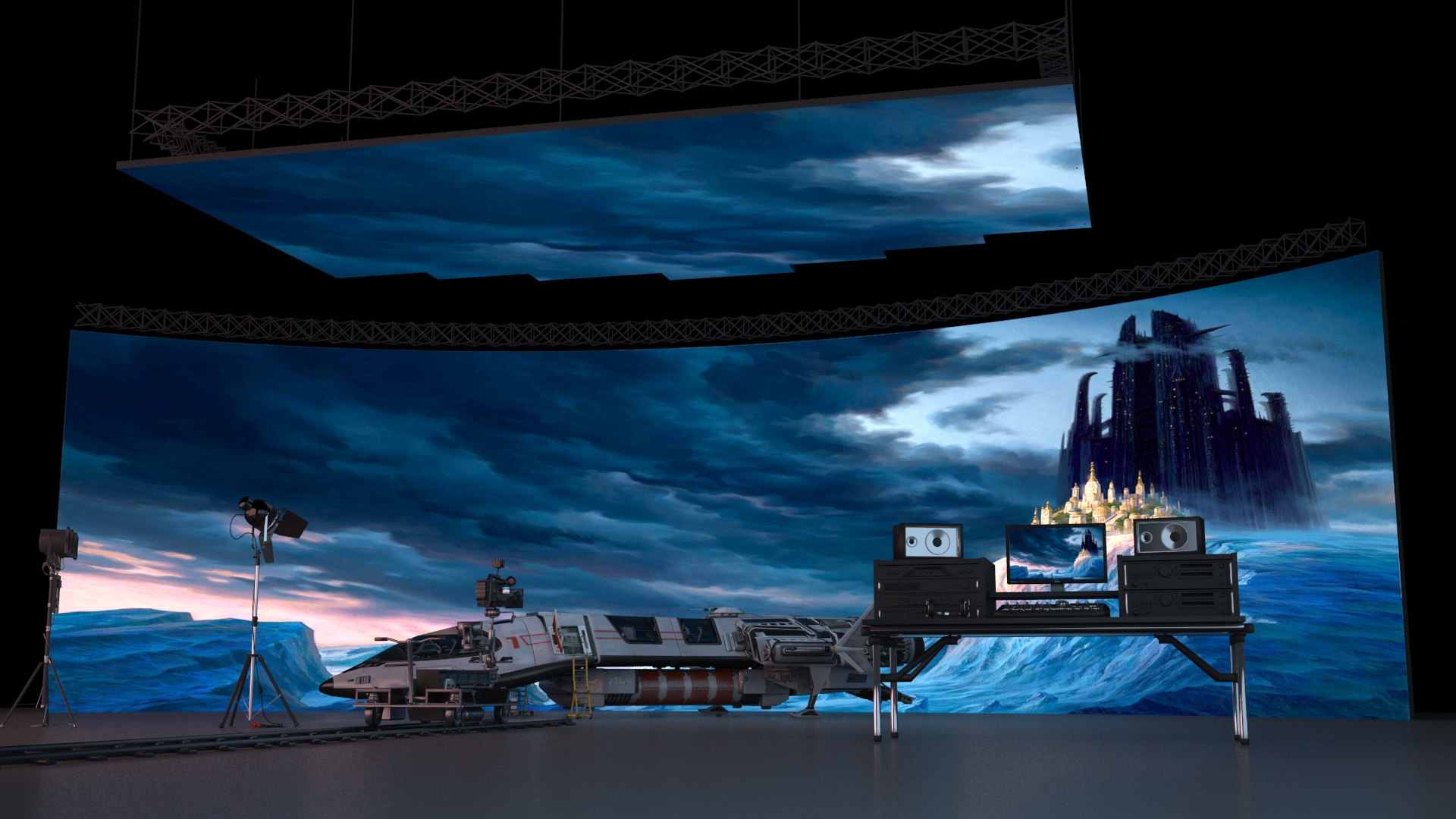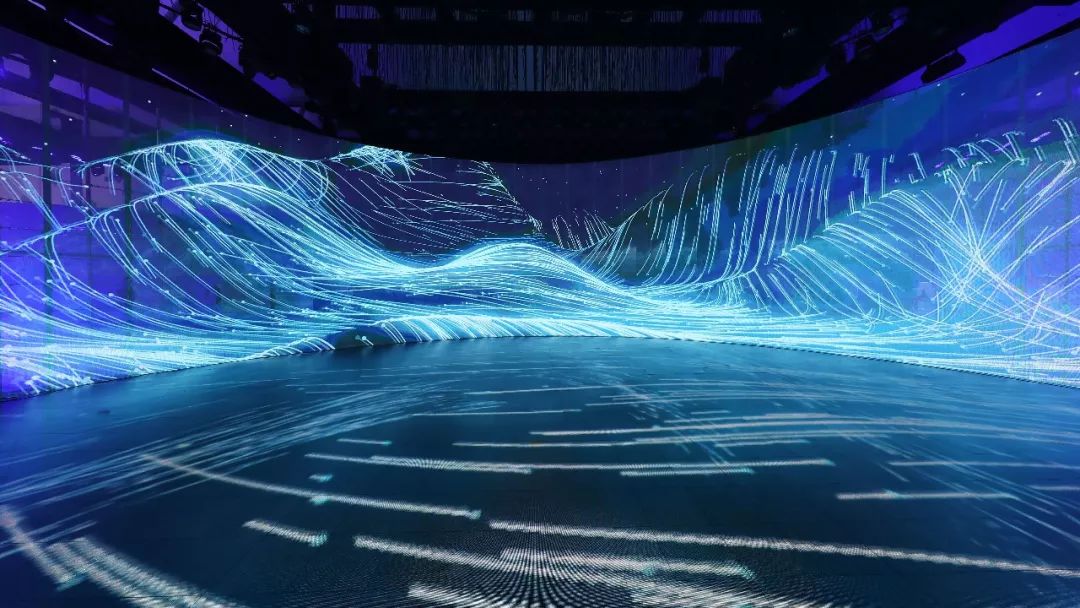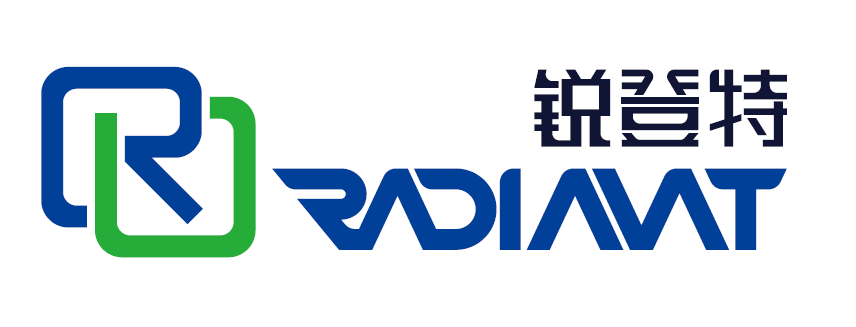The steps for an XR stretch shot are roughly the same as for a VP studio shot. But usually in a VP studio shot the entire shot is captured in-camera without the need for expansion. In the XR extension studio, because of the particularity of the extension of the picture, there are more links to expand the "background" picture in the post-production. After the shot material is sent back to the XR virtual server, it is necessary to extend the scene to the outer cone and screenless area through the method of image overlay, and integrate the real scene with the virtual position. Achieve more realistic and immersive background effects. Then through color calibration, positioning correction and other technologies to achieve the unity of the inside and outside of the screen, and finally output the expanded overall picture. In the background of the director system, you can see and output the completed virtual scene. On the basis of extended reality, XR extended shooting can also add motion capture sensors to achieve the interactive effect of AR tracking. Performers can interact with virtual elements in three-dimensional space instantly and unrestrictedly on stage.

ED studio virtual production is a fusion of technologies. The required hardware and software equipment includes LED display, virtual engine, camera tracking system and virtual production system. Only through the perfect integration of these hardware and software systems, can fantastic and cool visual effects be captured and the final effect be achieved. Although the LED display of the XR extension studio has a small construction area, it needs low-latency features to support live broadcasts, requires greater data transmission and real-time interaction, and requires a system with stronger performance to support real-time image processing. VP studio LED construction area is large, but because there is no need for screen expansion, the system requirements are relatively low, but high-quality image shooting is required, and the configuration of other equipment such as virtual engines and cameras must reach professional level.
The infrastructure that connects the physical stage with the virtual scene. Highly integrated LED display hardware, control system, content rendering engine and camera tracking. The XR virtual production server is the core of the virtual shooting workflow. It is responsible for accessing the camera tracking system + virtual production content + real-time images captured by cameras, outputting virtual content to the LED wall, and outputting the synthesized XR video images to the director station for live broadcast and storage. The most common virtual production systems are: Disguise, Hecoos.

The rendering engine of video production is the performer of various latest graphics technologies. The pictures, scenes, color effects, etc. seen by the audience are directly controlled by the engine. The realization of these effects includes many rendering techniques: ray tracing - image pixels are calculated by particles of light; path tracing - rays are reflected back to the viewport Calculations; Photon Mapping - Light source emits "photons" calculations; Radiosity - Lighting paths reflected from scattering surfaces into the camera. The most common rendering engines are: Unreal Engine, Unity3D, Notch, Maya, 3D MAX.
LED studio virtual production is a new scenario for large-screen display applications. It is a new market derived from the continuous development of the LED small-pitch market and the continuous improvement of the technical level of LED display equipment. Compared with the traditional LED screen application, the virtual LED display screen has more accurate color reproduction, dynamic high refresh, dynamic high brightness, dynamic high contrast, wide viewing angle without color shift, high-quality picture display, etc. stringent requirements.
Post time: May-04-2023
